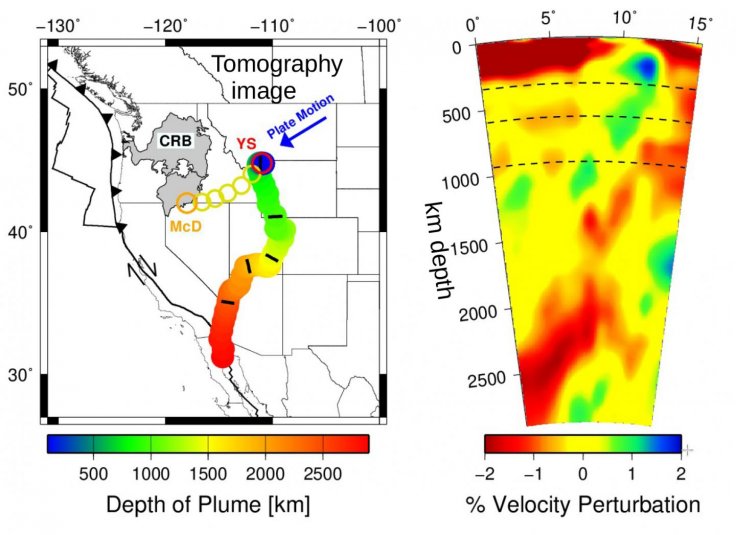The Yellowstone Supervolcano, which last erupted about 630,000 years ago is just a National Park now with its geysers and hot springs attracting many tourists. But for geologists, it remains a puzzling chimney-like structure that has penetrated thousands of kilometers deep touching the border of the Earth's core and mantle.
A recent study by Bernhard Steinberger of the German GeoForschungsZentrum and colleagues in the USA tried to develop a model of the Earth's mantle to better understand the processes in the Earth's interior. The paper will be published in the journal "Geochemistry, Geophysics, Geosystems" by the American Geophysical Union.

According to the model, a mantle plume structure exists thousands of kilometres deep beneath the Yellowstone volcano touching the border of the Earth's core and mantle. Usually, the origin of the plume is traced to the "Baja California", more than a thousand kilometers southwest of the national park and often earthquake waves are linked to this, though the idea did not fit in with the movement of the Earth's lithospheric plates.
Like the plume of smoke of a steam ship, the mantle plume moves from Baja California to the north-northeast to the Yellowstone volcano, strated researchers. Since it is clear that Yellowstone is an intraplate volcano unlike most other volcanoes in the world which are located at the borders of continental plates, where material from the Earth's interior rises, as in Iceland.

Or it could be one continental plate submerges under the other and melts, the way the American westcoast is. But in the case of intraplate volcanism, it goes back to "hotspots" under the Earth's crust, where a hole is virtually burned through and a volcano grows. This is how Hawaii, for example, came into being, said researchers. Accordingly, there are slow movements of the rock in the lower mantle of the Earth, which are directed southwest relative to the surface.









